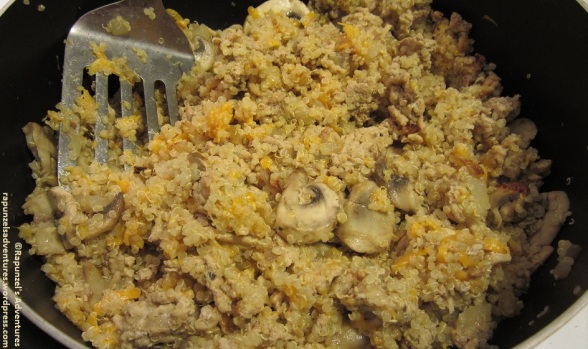Fats have a really bad reputation in our society. The amount of ‘low-fat’ or ‘no-fat’ products out there is atonishing. We’re told to cut our fat intake down and that fats are the evil of the food world. The overwhelming belief is that fat, essentially, is how we become fat. Our logic dictates that if we eat fat, it will become fat on our bodies.
This thinking is wrong. The label ‘fat’ when looking at food groups (not body composition) covers a large number of types of fat. Yes, some of it is the reason we, as a society, have gained weight, but that doesn’t mean we should cut out all fats. There are some fats that are amazing for our bodies and even some fats that fight other fats. Why would you want to cut out something that helps you lose fat?
We need to stop and own our bodies. We need to educate ourselves in knowing what is or isn’t good for us. Avoid bulking everything under one label of ‘good’ or ‘bad’ for us.
I eat bacon. Not your gross, mechanically-separated and full-of-ingredients-I-can’t-even-pronounce chicken or turkey bacon, but bacon from a pig that has 4 ingredients in it: Pork (not mechanically separated), salt, water, and spices. No words ending in ‘ate’, ‘ose’, or sounding like something I learned in high school chemistry.
“You must trim the fat of that before you eat, then.” Nope. I put it on the plate straight as it is and savour every piece of it. If society is to be believed, I’d go up in weight, right? I’m eating something that is fairly full of fat on a regular basis.
I’ll let you know when the scale ever shows my weight going up from that, but it might be a while. Ever since I started changing my foods to include some fat, a small but reasonable amount, my scale has gone down. Albeit this also came with the change to cut down on my grains and starches signficantly, but increasing my fat intake has not had any negative effect on my weight or body shape (since fat weighs less than muscle). I’m not putting on fat, and in fact, I’m seeing more muscle definition than I did eating ‘low-fat’ options.
The power is in knowing what fats are your friends. So let me introduce them: Saturated and Unsaturated. Unsaturated fats are usually identified by their sub categories: Monounsaturated, Polyunsaturated, and Trans fats. I know we’ve all heard of Trans fat.
Part of the reason fats get the reputation they do is they have more calories per 1 gram than the other macronutrients out there:
- Fat – 9 calories
- Alcohol – 7 calories (for reference, not a macronutrient)
- Carbohydrate/Protein – 4 calories
If you’re counting calories, the choice seems obvious, right? Carbs and protein are the ways to go. But counting calories doesn’t work in almost all cases. Carbs serve one purpose for our bodies: energy. Unless you’re working your muscles with high intensity workouts, you aren’t going to be burning many carbs. We don’t use carbs to fuel leisurely walks or sitting in front of the T.V.. Your body can only store so much carbohydrate, a finite amount depending on your muscle mass. So the rest of it goes into storage. I’m sure we all know what storage looks like on a body.
So although carbs have lower caloric value per gram, they don’t bring a lot of value to your every-day meals except when consumed around work out times (to fuel and repair your muscles). Calorie counting would have you eating them regardless. Let’s dispense with calorie-based judgements and look at what fats can do to justify the calories, shall we?
Dietary fat has many roles in our body’s fuction (compared to carbohydrate’s 1 function, energy):
- Energy source
- Forms the brain and nervous system
- Hormone manufacturing and balance
- Source of 2 essential fatty acids: linlenic acid (omega-3) and linoleic acid (omega-6)
- Forms cell membranes
- Aids transport of fat soluble vitamins: A, D, E, and K
So fat and carbohydrates both serve as sources of energy. I just said we don’t burn enough to use our carbs so why would having fat as a source of energy be a good thing? Won’t it just go to ‘storage’ with the extra carbs?
No, it won’t. It already is storage. Most of us have a fairly good sized store of fat, as well. We have a virtually unlimited supply of that stored energy called fat. They call it ‘burning fat’ for a reason.
The big difference is, unlike with carbs where you need high intensity exertion to burn, when at rest or in low intensity activities such as walking and most steady-state cardio, you burn fat. When you are not challenging your heart and body with high intensity work outs, the fuel source of choice is fat (and some muscle, but I’ll save that for another discussion).
Most people are encouraged to intake 30% of their diet in the form of fats, 10% for saturated and 20% broke evenly between our two favourite unsaturated fats: monounsaturated and polyunsaturated. There is a change coming slowly to this structure though as more and more people are encourage to increase their fat intake breakdown, particularly when it comes to Omega-3s vs Omega-6s.
A diet high in saturated and polyunsaturated fats (from unprocessed food sources) is not as detrimental as we’ve often believed, however, a diet that focuses on ‘low-fat’ can lower testosterone levels and cause the remaining testosterone to be ineffective. Remember, fat helps manufacture and balance hormones. Cutting it down, or out entirely, will have effects on the hormone balances in your body.
Over the next few posts, I will be delving more into the different fats like omega-3s, omega-6s, saturated, trans fat, and a little on cholesterol. I hope you guys find this info helpful.




